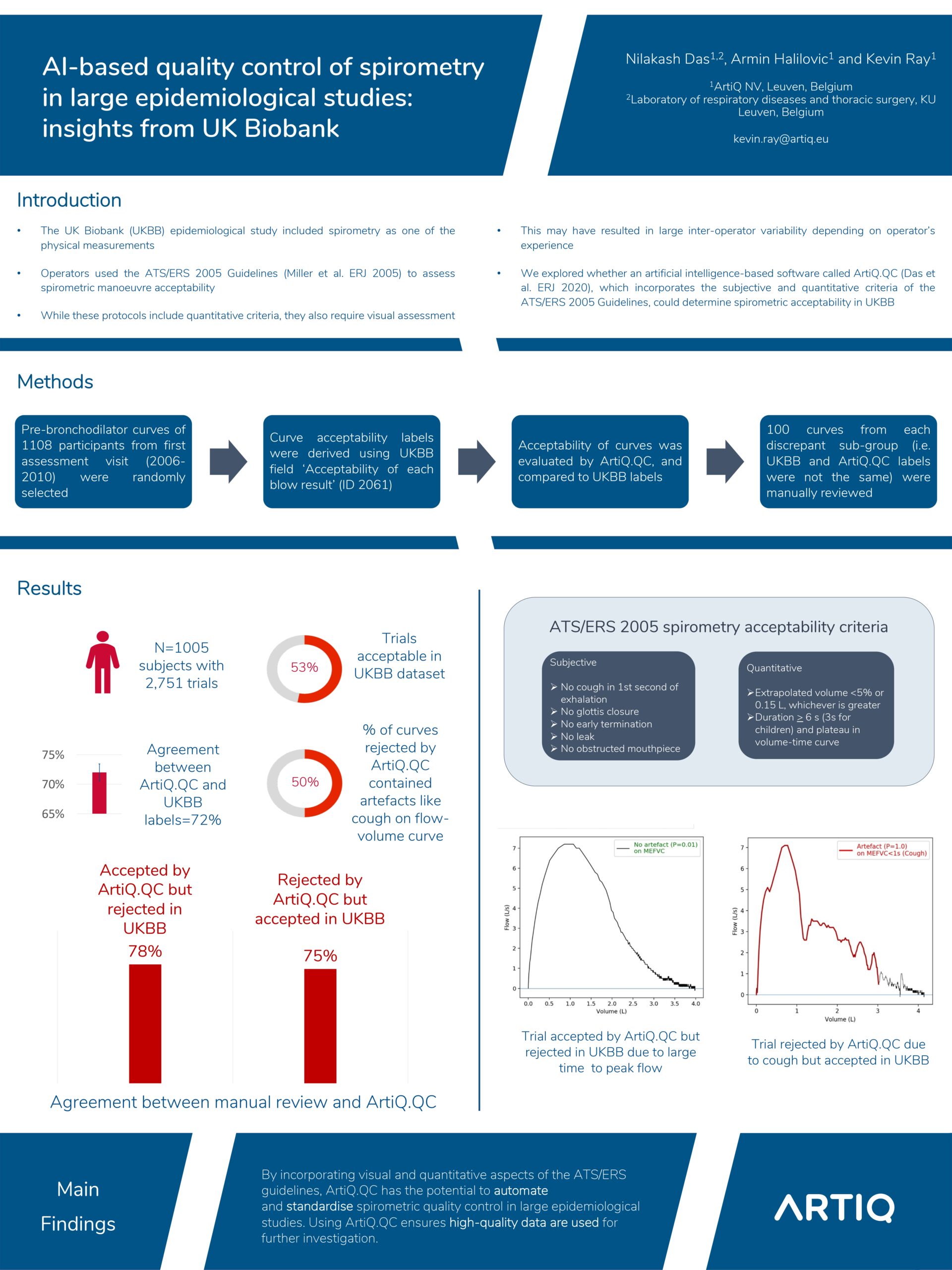AI-based quality control of spirometry in large epidemiological studies: insights from UK Biobank

Introduction
Spirometry manoeuvre acceptability in the UK Biobank (UKBB) study was assessed using This may have resulted in a large inter-operator variability that was dependent on the operator’s experience. We explored an artificial intelligence (AI)-based software called ArtiQ.QC (Das et al. ERJ 2020) that incorporates visual experience of a trained operator and quantitative guidelines in determining spirometric acceptability in UKBB.
Methods
Pre-bronchodilator curves of participants from the first assessment visit (2006-2010) were randomly selected. UKBB labels for acceptability were derived using UKBB field ID 3061 (“Acceptability of each blow result”). We used ArtiQ.QC to assess acceptability using the ATS/ERS 2005 guidelines, and compared the ArtiQ.QC labels to UKBB. Subsequently, a technician visually examined each discrepant subgroup (‘A’ with UKBB=unacceptable and ArtiQ.QC=acceptable, ‘B’ with UKBB=acceptable and ArtiQ.QC=unacceptable).
Results
9.3% of participants had missing data. In the remaining (1005 participants, 2751 curves), the prevalence of acceptable labels was 57.5% and 53% for ArtiQ.QC and UKBB, respectively, with an agreement of 72% (95% CI=0.70, 0.74). An end of test failure (60%) and a visual presence of an artefact (50%) on the flow-volume curve were the most common reasons AritQ.QC gave for an unacceptable label. On examining 100 randomly selected curves from discrepant subgroups A (N=323) and B (N=452), the technician agreed with ArtiQ.QC 78% and 75% of the time, respectively.
Conclusion
By incorporating visual and quantitative aspects of the ATS/ERS guidelines, ArtiQ.QC has the potential to automate and standardise spirometric quality control in large epidemiological studies. Moreover, it ensures high-quality data are used for further investigation. Finally, it provides holistic feedback on manoeuvre quality, including visual assessment of flow-volume curves.
Authors
Nilakash Das1,2, Armin Halilovic2, and Kevin Ray2
1 Laboratory of Respiratory Diseases and Thoracic Surgery, Department of Chronic Diseases Metabolism and Ageing, KU Leuven, Leuven, Belgium
2 ArtiQ NV, Leuven, Belgium
